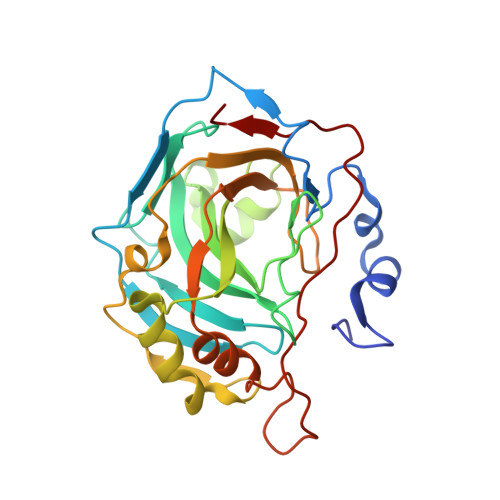Human carbonic anhydrase II-cyanate inhibitor complex: putting the debate to rest.
West, D., Pinard, M.A., Tu, C., Silverman, D.N., McKenna, R.(2014) Acta Crystallogr Sect F Struct Biol Cryst Commun 70: 1324-1327
- PubMed: 25286933
- DOI: https://doi.org/10.1107/S2053230X14018135
- Primary Citation of Related Structures:
4E5Q, 4QEF - PubMed Abstract:
The binding of anions to carbonic anhydrase II (CA II) has been attributed to high affinity for the active-site zinc. An anion of interest is cyanate, for which contrasting binding modes have been reported in the literature. Previous spectroscopic data have shown cyanate behaving as an inhibitor, directly binding to the zinc, in contrast to previous crystallographic data that implied that cyanate acts as a substrate mimic that is not directly bound to the zinc but overlaps with the binding site of the substrate CO2. Wild-type and the V207I variant of CA II have been expressed and X-ray crystal structures of their cyanate complexes have been determined to 1.7 and 1.5 Å resolution, respectively. The rationale for the V207I CA II variant was its close proximity to the CO2-binding site. Both structures clearly show that the cyanate binds directly to the zinc. In addition, inhibition constants (∼40 µM) were measured using (18)O-exchange mass spectrometry for wild-type and V207I CA II and were similar to those determined previously (Supuran et al., 1997). Hence, it is concluded that under the conditions of these experiments the binding of cyanate to CA II is directly to the zinc, displacing the zinc-bound solvent molecule, and not in a site that overlaps with the CO2 substrate-binding site.
Organizational Affiliation:
Department of Biochemistry and Molecular Biology, University of Florida, Gainesville, FL 32610, USA.
















